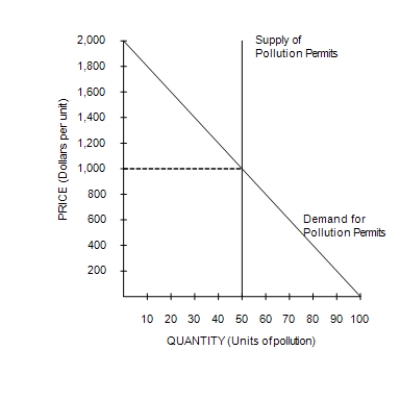Figure 10-7 
-Two firms, A and B, each currently emit 100 tons of chemicals into the air. The government has decided to reduce the pollution and from now on will require a pollution permit for each ton of pollution emitted into the air. The government gives each firm 40 pollution permits, which it can either use or sell to the other firm. It costs Firm A $200 for each ton of pollution that it eliminates before it is emitted into the air, and it costs Firm B $100 for each ton of pollution that it eliminates before it is emitted into the air. After the two firms buy or sell pollution permits from each other, we would expect that Firm A will emit
Definitions:
Vivid Memory
A particularly clear and detailed memory of an event or moment, often with emotional significance, that remains strong over time.
Ignoring Base Rates
Involves disregarding statistical information in favor of anecdotal evidence when making judgments.
Availability Bias
A cognitive bias that makes people overestimate the importance of information that is available to them, leading to a misrepresentation of reality.
Gambler's Fallacy
The erroneous assumption that an event occurring with greater regularity than usual in a specific timeframe will occur less often in the future, and the opposite.
Q112: In the case of a technology spillover,
Q144: When the government intervenes in markets with
Q154: In the Tragedy of the Commons parable,
Q228: Which of the following is the most
Q238: Tyler owns a dog and receives a
Q313: Refer to Table 10-2. What is the
Q430: Which of the following is not a
Q468: Refer to Figure 9-24. With free trade,
Q479: For a given country, comparing the world
Q523: Technology spillover is one type of<br>A) negative